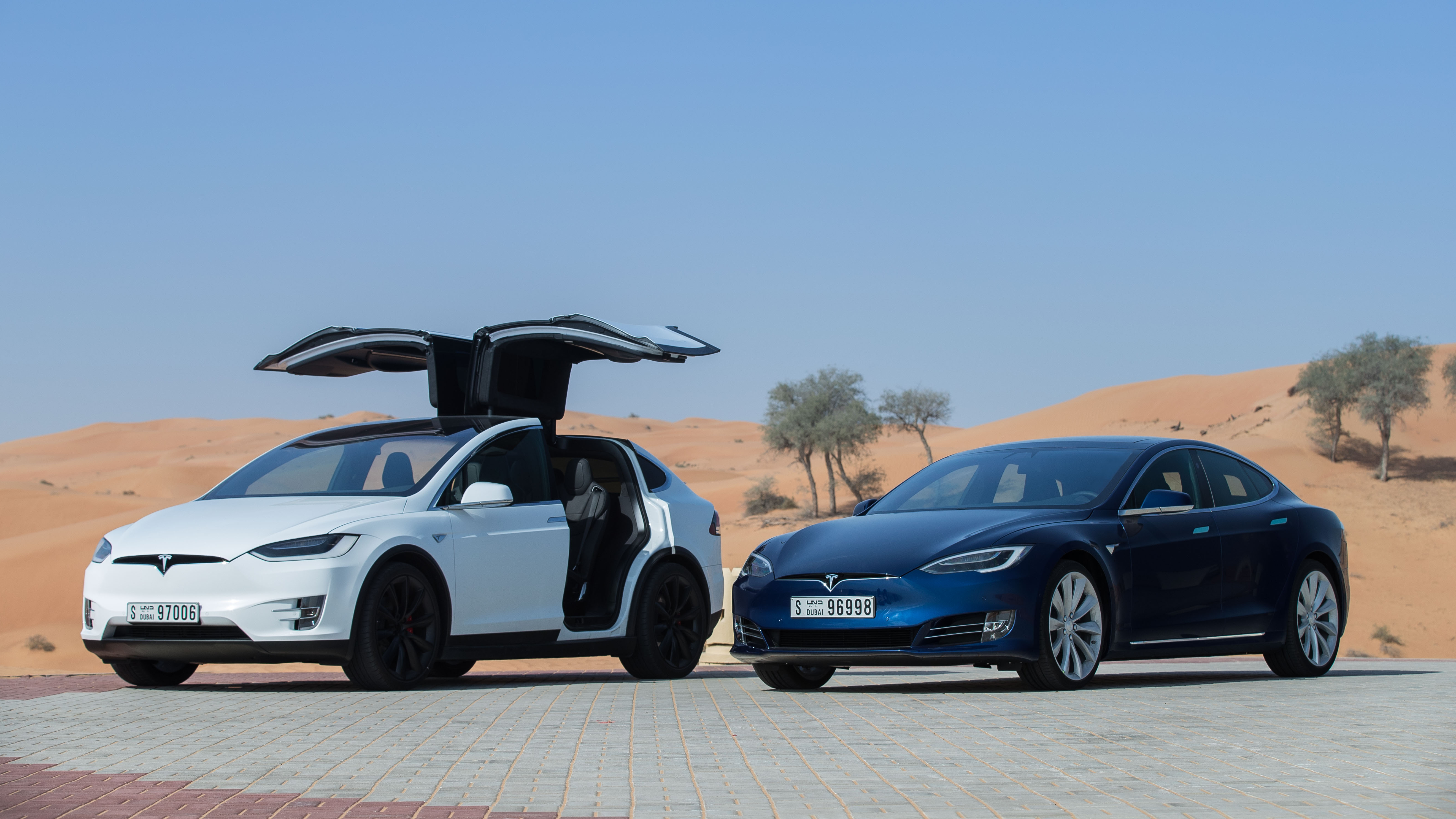
Tesla has at long-last opened their Dubai showroom, and the attention around their cars is undeniable. The thought of never having to fill up your car at a gas station may sound like a dream, but it’s very much a reality that plenty of Tesla owners enjoy already.
Unlike a hybrid, Tesla is an electric vehicle that will need to be charged up in order to be driven. While a Hybrid vehicle can operate on battery power for a short period, it primarily still requires regular petrol to operate on the roads.
Charging infrastructure is still very much in its infancy in the UAE, it’s only set to grow in the coming years, as more and more people start to embrace electric vehicles.
So if you’ve got some burning questions about Tesla, here’s a handy guide to everything you’ll need to know about owning a Tesla in Dubai.
Does it really not need any fuel? How much would I save in fuel costs?
That’s right – you’ll never need to put a drop of petrol in your Tesla. It has practically zero emissions, and runs 100% off battery power. What’s more, the front space where you’d normally find a car engine is now replaced by a front trunk, so you get extra storage space for your things.
For a single charge at home, you would pay approximate AED 23 for a full charge. Compare that with about AED 160 for a full tank for a Mercedes E-Class E350 Sedan 3.5L, 2017 model for approximately the same range, and you can see how much you can save in a month.
Charging: How do I charge a Tesla, where do I charge it and how long does it take to charge?
There are three main ways to charge a Tesla:
Get daily insight, inspiration and deals in your inbox
Sign up for breaking news, reviews, opinion, top tech deals, and more.
Standard Wall Charger: This comes with any Tesla car, and allows you to plug your car into any standard 3-pin socket and recharge it. This is also the slowest way to recharge your Tesla.
Destination Charger: These chargers are available at places like certain hotels or shopping malls. They charge your Tesla much faster than a Standard Wall Charger, and will add about 100km of distance with a single hour of charge. You can also get a special home version of the Destination Charger installed for your personal use for around AED 2,000.
Supercharger: This is the fastest way to charge your Tesla, with a full charge taking a little under an hour. Superchargers are generally installed at the borders of most cities, and are designed so that on long journeys your Tesla has enough charge to get from one Supercharger to another.
Destination charging stations are available at most shopping malls in Dubai and in Abu Dhabi. There is one Supercharger available in Masdar City in Abu Dhabi, and one available at Last Exit at Jebel Ali in Dubai.
Assuming a 100 kWh battery with 565km of mileage, a Standard Wall Charger would take about 22 hours, a Destination Charger would take about 5 hours, and a Supercharger would take about 72 minutes.
Charging at a Destination Charger is completely free. Each year, owners receive 400 kWh of free Supercharger credit, enough to drive about 1600 km – any charging above this is charged at a nominal fee. For charging at home, you’ll incur any charges to your normal electricity bill, but these again will be much cheaper than filling your car with petrol.
How far can I drive on a full charge and what happens if I run out of charge?
A 100D Model S is quoted as having about 594km of range on a full charge. However, this is purely on paper – this distance is dramatically reduced when you take into account the outside temperature and what speed the air conditioning is on. With an outside temperature of 40C and the air conditioning running at a medium speed, you’ll get about 548km of range on a full charge.
Just like with a normal car that runs out of petrol, you’ll have to call a service truck and get your car towed. The only difference is that you’ll have to get it towed to a nearby charger, rather than a gas station.
Lets talk numbers: How much does a Tesla cost and what about insurance and maintenance?
A Tesla Model S starts from around AED 270,000, while the Model X starts from around AED 330,000. These are base model prices, which will obviously increase as you customize or add more features to your car.
With regards to insurance, according to Jonathan Rawling, CFO, of compareit4me, “For the Model S, based on its value and power, we’d estimate that a fully comprehensive insurance policy would cost between AED 8,000 and AED 12,000 for the Model X. However, that number could vary wildly depending on the primary driver’s age, nationality and no-claims record. The spare parts issue would also come into play, too.”
These approximate insurance costs are on par with say a Mercedes E-Class E350 Sedan 3.5L, 2017 model.
At the moment service costs aren’t quite apparent as Tesla is only just launching, but given that there are less moving parts in a Tesla than a standard car engine, we’d expect services to be less frequent and be less expensive. A Tesla’s battery lasts around ten years before needing to be replaced, which in theory would be the only major part that you’d replace.
Does the Autopilot feature work in Dubai?
To some extent, yes. When driving long distances you’ll be able to switch on Autopilot to have the car stay within your lane and maintain a safe distance from the car in front of you. It’s a system that is still under testing in the UAE, so there will be some restrictions in place and Tesla has already warned that drivers are still expected to keep their hands on the wheel and stay alert at all times.
Read more on Tesla:
A former IT & Marketing Manager turned full time Editor, Nick enjoys reviewing PC components, 3D Printers, projectors, and anything shiny and expensive. He can also be found baking up a storm in the kitchen, which we are more than happy to encourage.
